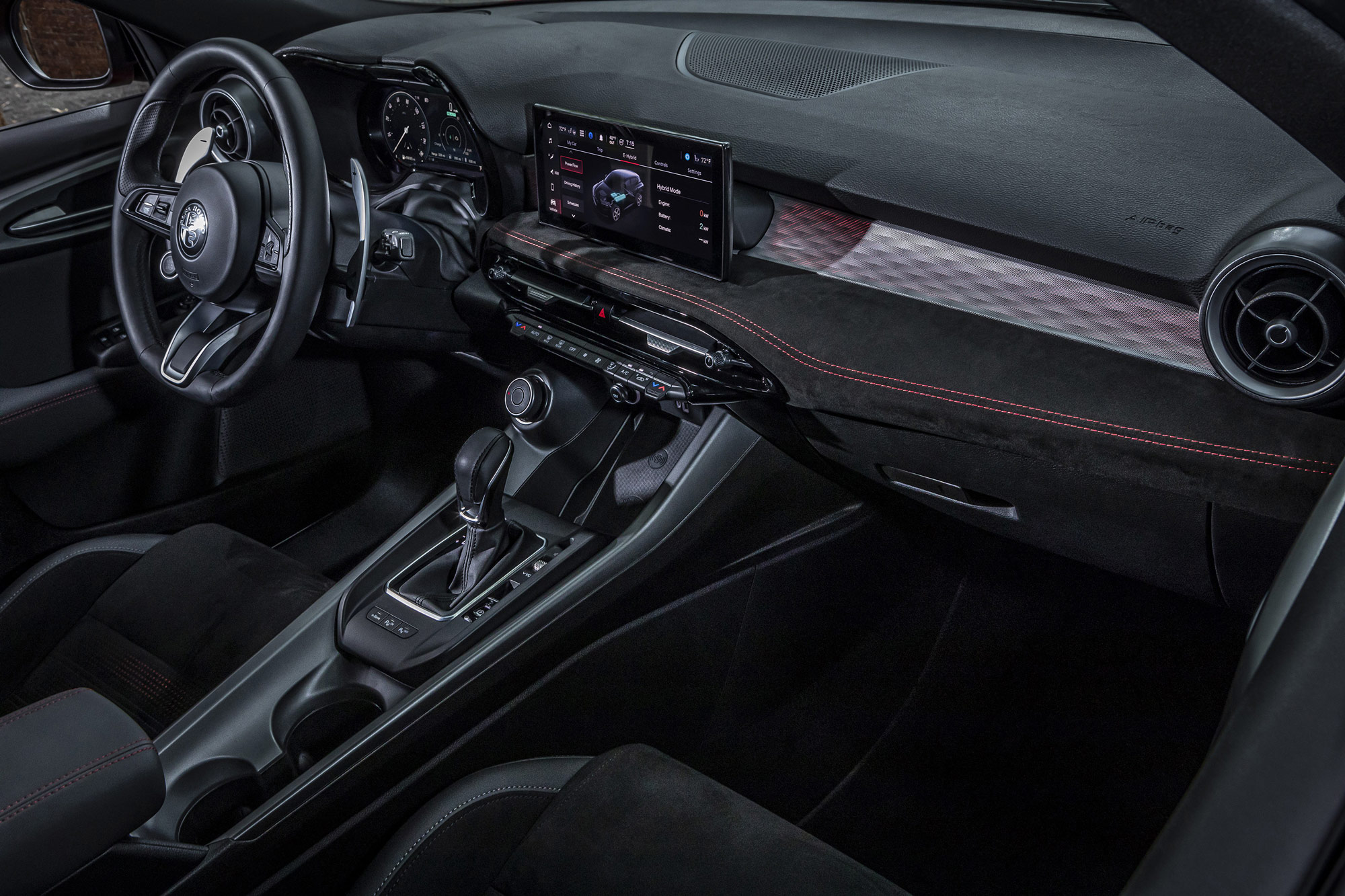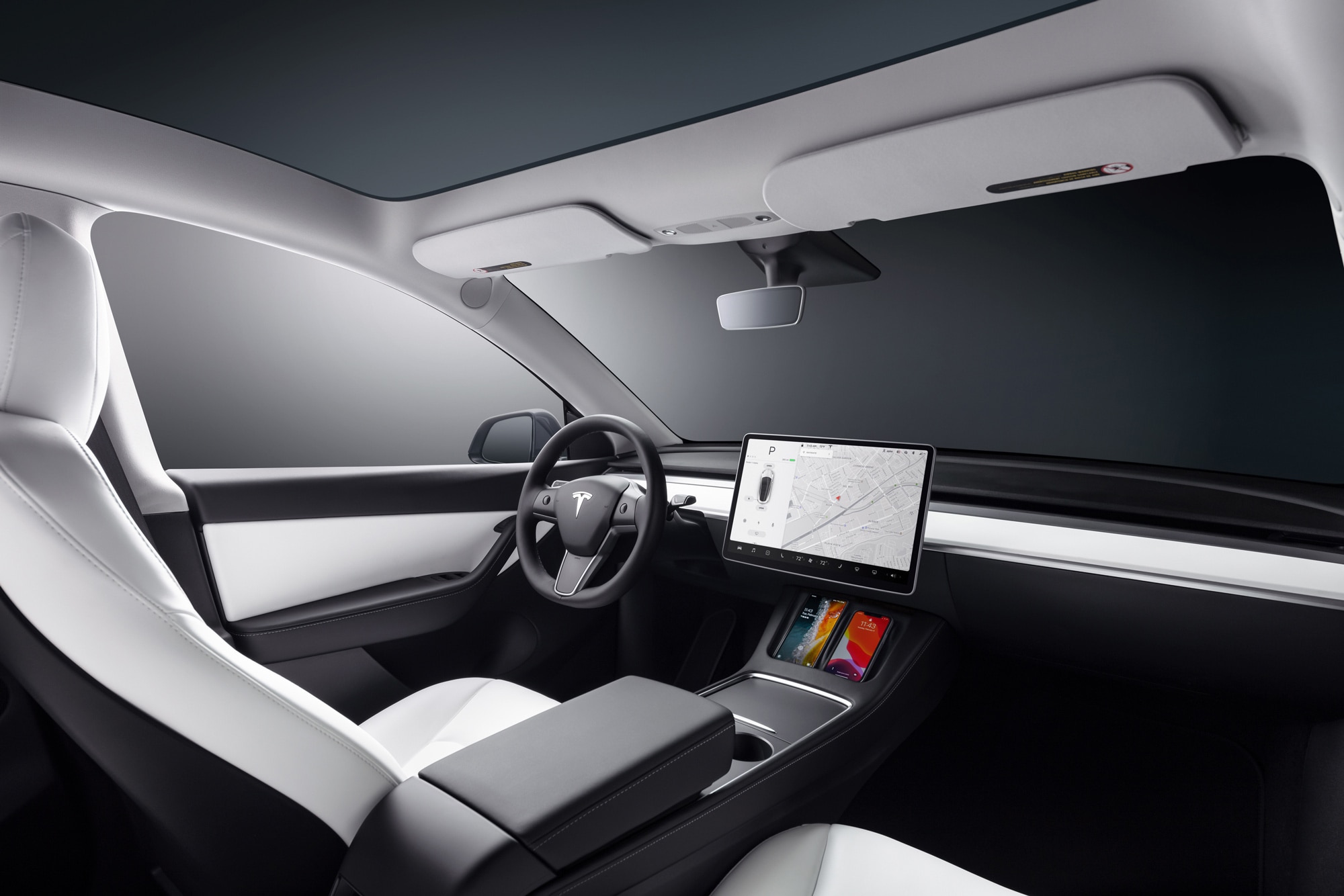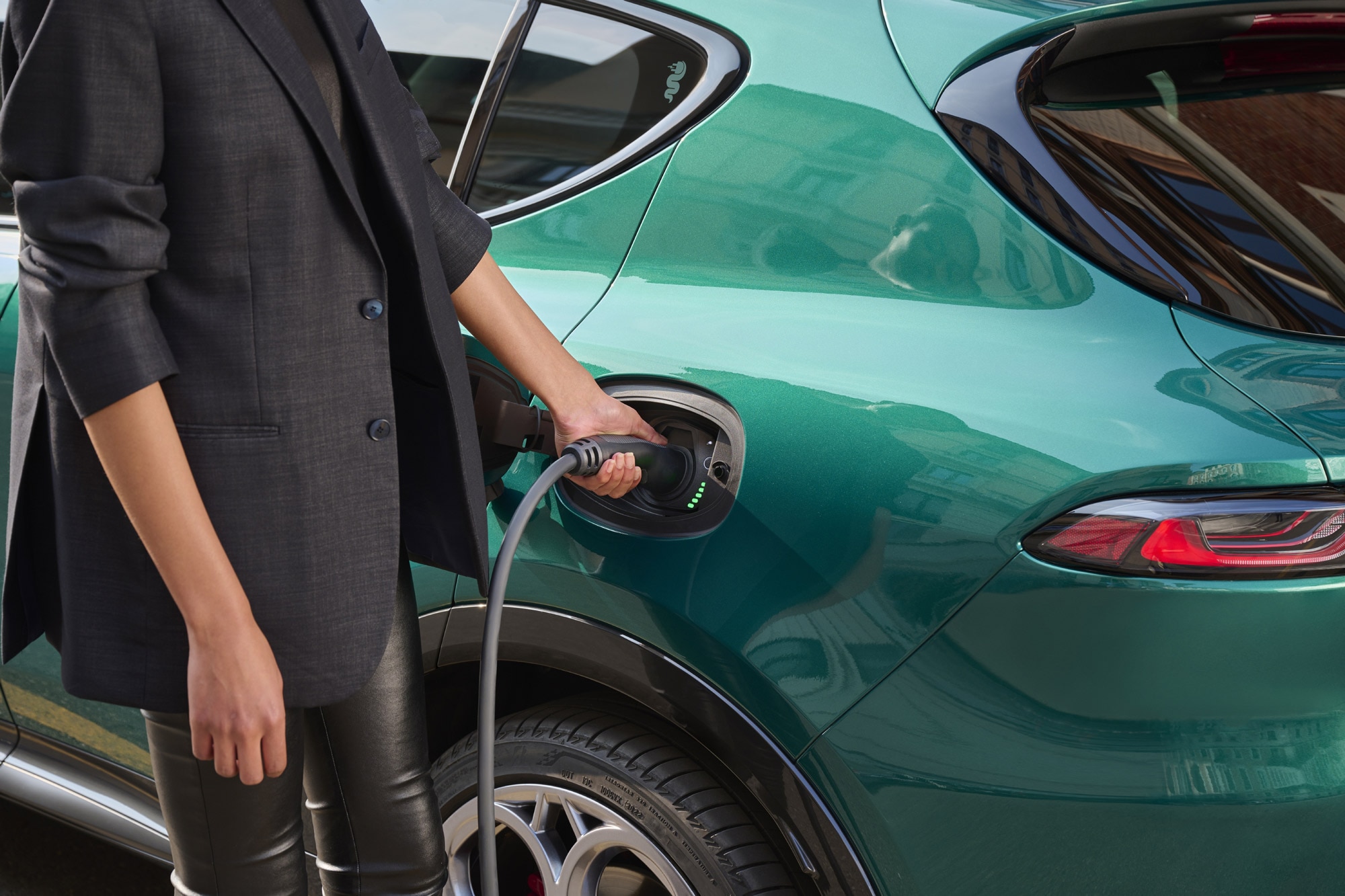Compared: 2024 Alfa Romeo Tonale vs. 2023 Tesla Model Y
How does Alfa Romeo's PHEV crossover stack up against the competition from Tesla?
 Alfa Romeo | Tesla
Alfa Romeo | Tesla
The Alfa Romeo Tonale plug-in hybrid (PHEV) is for eco-conscious luxury-vehicle shoppers who like the idea of electric motoring but aren't quite ready to drop the gas engine. The Tonale's size and shape are right for the times.
The Tesla Model Y is essentially just a taller, slightly more expensive version of the Model 3 sedan, but people may like its hatchback rear end and high roofline. There are a few things you can expect from each of these two electrified utes.
 Alfa Romeo
Alfa Romeo
The Alfa Romeo Tonale Is the Price Winner
For about $45,000, shoppers can take home the entry-level Tonale, complete with all-wheel drive (AWD), a turbocharged 1.3-liter four-cylinder, a 15.5-kWh battery, and a 90-kW electric motor. The top-of-the-line $49,000 Veloce has an adaptive suspension, a dual exhaust, and Alcantara-wrapped seats, but its sporting aspirations stop there. All trims boast the same 6.0-second zero-to-60-mph time.
Tesla isn't as forthcoming with information as other automakers, but the various Model Ys sport appreciably different acceleration times. The slowest model — 5.0 seconds to 60 mph — is also the least expensive, ringing in at about $49,000 before incentives. All versions feature two motors, providing AWD, with varying ranges.
If you're looking for a seven-seater, you'll need to select the Model Y Long Range version, which costs about $52,000, and option the $3,000 third row — but that row is small.
Unlike the Tonale Veloce, Tesla's Model Y Performance version, which costs about $56,000, both looks sporty — with its carbon-fiber spoiler, 21-inch black wheels, and lowered suspension — and is quicker off the line than the other variants, reaching 60 mph in 3.5 seconds.
 Tesla
Tesla
The Tonale and Model Y Are Both Feature Heavy
Both vehicles have numerous amenities. Adaptive cruise control, blind-spot monitoring, rain-sensing wipers, heated front seats, automatic climate control, remote start, a push-button ignition, a heated steering wheel, a wireless charging pad, and a built-in navigation system are all included.
Alfa offers a surround-view camera, ventilated leather-wrapped seats, and a power liftgate. Tesla, by contrast, is still working on a surround-view camera and doesn't offer those same seats but provides the power liftgate as standard equipment.
Buyers can also option Tesla's advanced driver-assistance features on the Model Y for several thousand dollars more.
With a 10.3-inch touchscreen in the center stack and a 12.3-inch digital instrument cluster in front of the driver, the Tonale's cabin is more conventional than the Model Y's, which has just one 15.0-inch display attached to the dash. Alfa's infotainment system allows for wireless Apple CarPlay and Android Auto connectivity — something Tesla has famously eschewed. The Model Y makes up for this in part with integrated Netflix and YouTube apps, which passengers can use while waiting for their vehicle to charge.
As for size, the Model Y is roomier, with the two-row model offering 56 cubic-feet of passenger space up front and 50 cu-ft in back. The Tonale provides 54 cu-ft and 46 cu-ft, respectively. The Tesla can also accommodate more stuff, given its 30 cu-ft cargo hold and 4 cu-ft frunk. Alfa buyers have just 23 cu-ft of space to work with.
 Alfa Romeo
Alfa Romeo
The Tesla Model Y Is the Fuel-Economy Champion
With an EV range of about 33 miles, the Tonale can handle most daily trips on electricity alone. In such cases, it delivers a respectable 77 MPGe. With gas alone it delivers an average 29 mpg.
In base form, the Model Y returns 129/116/123 MPGe city/highway/combined and can travel about 279 miles between charges. The Long Range sees pretty much the same efficiency score, delivering 127/117/122 MPGe, but it can go significantly farther: some 330 miles. The Performance model with its large wheels falls short, offering 115/106/111 MPGe and around 303 miles of range.
All vehicle pricing includes MSRP plus destination charges (set at the time of publication), and will be rounded to the nearest thousand.
Written by humans.
Edited by humans.
 Beth Nichols
Beth NicholsAfter graduating from the University of Michigan, Beth Nichols stumbled into automotive journalism and found her footing, jumping between a few car magazines before going freelance. Her head, once full of useless facts about literature and art history, now holds useless facts about vehicles. She edits, checks, and occasionally creates content for Capital One, and though she understands it’s customary to write a bio in the third person, I don’t like it.
Related articles
View more related articles